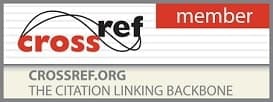- Printed Journal
- Indexed Journal
- Refereed Journal
- Peer Reviewed Journal
P-ISSN: 2394-1685 | E-ISSN: 2394-1693 | CODEN: IJPEJB
Impact Factor (RJIF): 5.38
2015, Vol. 2, Issue 2, Part D
To Study the Effectiveness of Corrective Exercises and Insole Placement on Flatfoot in Overweight Individuals
Author(s): Rajan Balakrishnan, Swapneela Jacob, Deebashini Nair
Abstract:
Background: The studies had been attempt to determine the effectiveness of corrective exercises and insole placement on flatfoot in overweight individuals but it appears that the results are varied. A study on the effectiveness of corrective exercises and insole placement on flatfoot in overweight individuals resulted that exercise alone provide less improvement on medial longitudinal arch. Another study on efficiency of corrective exercises and insole placements on flatfoot in overweight individuals provides greater improvement on medial longitudinal arch than the study on the effects of insole placement alone on flatfoot in overweight individuals.rnPurpose: The main purpose of this studies is to determine the presence of flatfoot in overweight individuals and to determine the effect of insole placement and foot corrective exercises on flat foot in overweight individuals.rnSubjects and Methods: The 30 overweight individuals with BMI of 25-29.9 between 20 to 30 years old with flatfoot was divided into 3 groups that receive insole only (n = 10), group that receive corrective exercise only (n = 10) and a group that receive insole and corrective exercises (n = 10). The outcome of footprint was measured based on The Foot Print Angle (FA) proposed by Forriol and Pascual. Measurement of the Body Mass Index (BMI) of the subject was measured based on Standard International (SI) Unit. Measurements of BMI and Footprints Angle was taken on pretest initially and then followed by 4th, 8th and 12th week. Measurements of each individuals was recorded to evaluate the effectiveness of interventions.rnResults: There was a significant different in Group A (Insole group) on left side at the level p< 0.0001 [ R square=0.8124, mean=27.40], and on right side at the level p<0.0001 [ R square=0.7664, mean=27.70], In Group B on left side, there was a significant different at the level p=0.0269 [ R square =0.416, mean=5] and on right side at the level p=0.0234 [ R square= 0.4169, mean=6.4]. In Group C on left side, there was a significant different at the level p=<0.0001 [R square=0.8994, mean=43.1] and on right side at the level of p<0.0001 [R square=0.7997, mean= 35.2].rn Application of insoles shows a greater significant value than the exercise with the mean difference of (21.85). Corrective exercises alone shows less significant compared to Insole placement and corrective exercises with the mean differences of (33.45). Insole placement and corrective exercises shows greater significant compared to Insoleplacement alone with the mean differences of (11.6). This indicates the data from the table supported the alternate hypotheses of the study and rejected the null hypotheses.rnConclusion: This studies concluded that the combination of insole and corrective exercises has greater significant in improving medial longitudinal arch than exercise and insole alone.
Pages: 184-188 | 1801 Views 172 Downloads
Download Full Article: Click Here
How to cite this article:
Rajan Balakrishnan, Swapneela Jacob, Deebashini Nair. To Study the Effectiveness of Corrective Exercises and Insole Placement on Flatfoot in Overweight Individuals. Int J Phys Educ Sports Health 2015;2(2):184-188.








 Research Journals
Research Journals